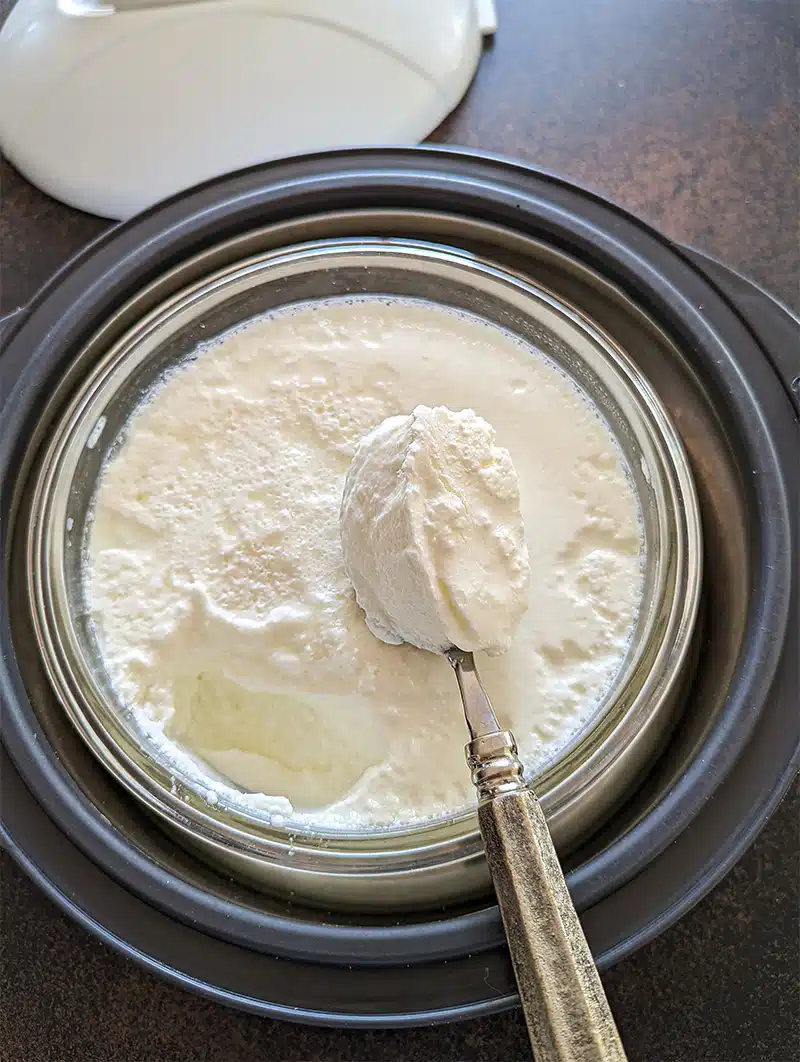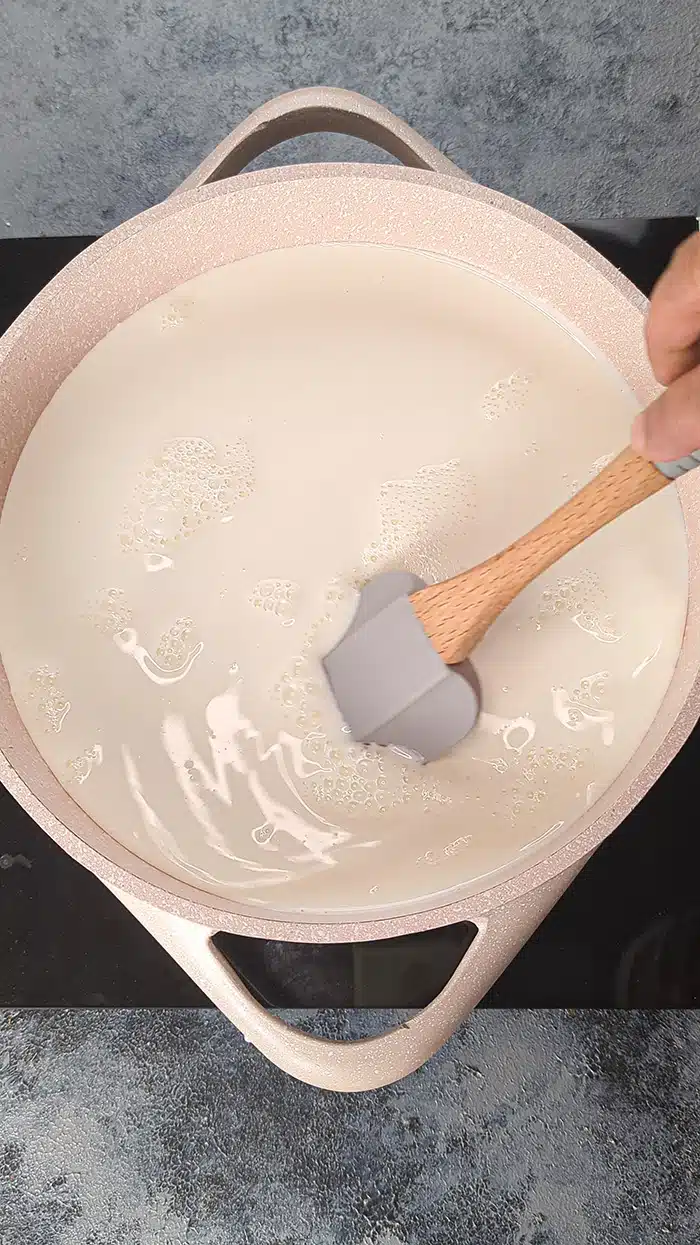Follow each step carefully, and you will have a bowlful of thick and well-set dahi to flaunt and relish!
You can consume a store-bought dahi which is undoubtedly thicker and firmer, but I can assure you, there is nothing like a homemade thick dahi made from scratch……. the feeling is lovely! Dahi is the Indian name for yogurt/curd. A homemade dahi requires warm milk and bacterial yogurt culture to prepare. In summer, setting dahi is easy as it takes fewer hours, and any corner of your kitchen counter where is left undisturbed. However, in winter, the cold weather can inhibit the growth of bacteria, which hampers the process of setting.
But in this recipe, I share some hacks for a super smooth and thick-set dahi, even in winter! And now, with these simple hacks, you can comfortably make a batch of well-set dahi at home in a few hours.
Super straightforward dahi recipe Comfort food loved by all ages Used for making various other recipes Known to be beneficial for gut health, and has Excellent coolant properties!
However, in winter, it is advisable to restrict the consumption of dahi as it promotes mucus secretion from the glands and causes related issues like colds and coughs. Milk — Milk is this recipe’s primary ingredient, which delivers creaminess and structure to the curd. Full-fat milk or milk with at least 2% fat works best for the creamiest and well-set curd. Bacteria (lactobacillus) — Curd needs a bacterial starter, known as culture, Jaamun or khatta in Hindi. It is usually taken from the previous batch of set curd/ dahi. The bacteria contained in the starter convert the milk’s lactose into lactic acid (by fermenting) and transform the milk into a pudding-like product called curd. Full-fat milk for best results — Full-fat milk produces the creamiest and most delicious curd and is highly recommended for reaching the desired results. Low-fat milk or skimmed milk may result in slimy or lacey-textured curd. Preventing the formation of whey (curd’s water) — The milk will coagulate and release water (whey) if the culture (jaamun) is introduced to the hot milk. Bring the milk to warm (right temperature), and then add a starter for the best-set dahi. Avoid using a sour starter — Ensure that the starter being used is not sour. Sour culture/ starter will produce sour dahi/ curd that is not very delectable.
Warmth is an essential ingredient —Temperature plays a significant role in the setting of dahi, where a warm, cozy, and ambient environment is required for the bacteria to thrive. An incubation temperature of 37° – 43° is needed to convert milk into curd. If a similar or higher temperature is maintained, a firm dahi sets quickly. Seasonal alterations — Dahi sets faster in steel containers in winter, but ceramic or glass containers may take somewhat longer for the dahi to set. However, in summer, ceramic or glass containers are the most appropriate to set dahi. They help dahi to set quicker and prevent it from turning sour. Refrigerating dahi — While refrigerating the dahi, ensure that the lid of the container is sealed correctly. A loose cover will allow the fridge odors to penetrate and spoil the taste of the dahi.
Green chilies are rich in lactobacilli bacteria that help the milk to ferment and aid in the formation of dahi. Once you get a batch of fresh dahi, you can use some of it as a starter for the next batch. The dahi prepared this way is slightly lighter than the one that is prepared with the dahi culture, but after a few attempts, you will attain the desired firmness and thickness in the dahi. Storing starter (jaamun) for a long — When traveling, you can store your starter/ jaamun by freezing it in the freezer. When required to set the dahi, thaw it overnight in the fridge. Next day, beat it well and add it to the warm milk. You will notice that the frozen dahi is grainy upon thawing. But there is nothing to worry about. Just beat it and use it as usual to set the warm milk.
Follow these step-by-step instructions and learn how to set curd in winters
This recipe of firm set dahi is easy and comes with helpful troubleshooting tips, making the entire process easy. So, if you are craving this creamy delight, let us begin with the process!
Recipes that use homemade dahi –


















































